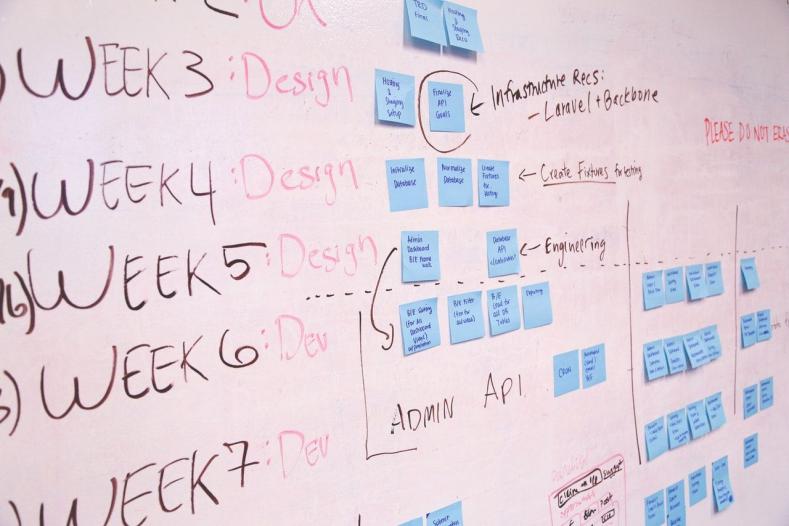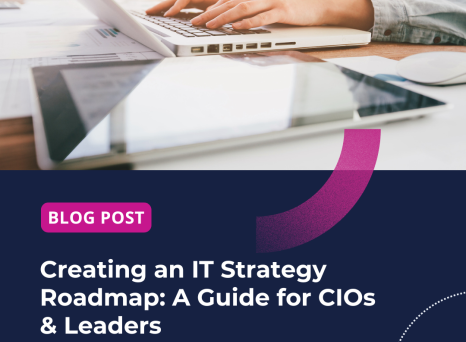
You'll have heard the term "portfolio management" in the financial sense. It implies that you manage your money in a way that maximizes your return on investment and minimizes your risk. Project Portfolio Management (PPM), similarly, is a combination of best practices and technology for managing projects, designed to increase ROI for your organization.
Eight out of ten project managers say that PPM is fundamental to business success. Project Portfolio Management truly is the differentiating factor for ambitious businesses looking to optimize their output.
Today, we'll tell you why PPM matters and how it addresses the challenges you're facing as a business. But first, let's define our terms:
Definition: What Is Project Portfolio Management?

The Project Management Institute defines it as:
A centralized management of one or more portfolios that enable executive management to meet organizational goals and objectives through efficient decision-making on portfolios, projects, programs, and operations.
In most modern companies, a portfolio of projects forms the connection between top-level strategy and day-to-day execution. So, the phrase “Portfolio Management” or rather “Project Portfolio Management" has gained momentum. The concept became popular as a way to manage business investments, projects or programs. And, it can be adapted to suit project management methodologies, such as Agile or Stage-Gate.
Operations keep the lights on, strategy provides the light at the end of the tunnel, but project management is the train engine that moves the organization forward.
— Joy Gumz, Director of Project Auditors
In short, PPM consolidates projects under one system, ensuring visibility and access for all key stakeholders, along with providing the tools to enable portfolio managers to prioritize and arbitrate between projects competing for the same (limited) resources.
Who Is Responsible for PPM?

Before we launch into why Project Portfolio Management matters, think about where PPM sits.
Typically, the Project Management Office or Officer will be the primary caretaker of the project portfolio, with project managers and teams working on individual projects under them. The PMO standardizes best practices, formats and reporting on projects. They also manage change requests, organize resources, prioritize and optimize projects, and much more. It's fair to say they have a lot on their plate! It's a vital role.
Also involved are business strategists, the board, C-Suite executives or similar high-level decision-makers. These stakeholders won't be managing the portfolio, but they will be the people PMOs go to with plans and business cases for projects. In a world where strategy plays a more integral part in PPM - which is the case for many mature organizations - the executives' role is even more enhanced. Take a look at this article on Strategic Portfolio Management for more information.
So, PPM touches all departments and people in the organization. Therefore, everyone shares some degree of responsibility. So, how can we ensure these individuals give that responsibility due diligence and attention?
Let's look at the reasons to believe.
Why Does Project Portfolio Management Matter?
As we've said, there are many similarities with Portfolio Management in the financial sense. You may have a limited amount of money or financial resources (stocks, bonds or mutual funds). You want to manage this money as a portfolio to maximize the overall value and to allow you to reach your financial goals.
A Project Portfolio Management process provides a way to select, prioritize, authorize and manage the funds according to a defined strategy.

Inform Prioritization and Decision-Making
Here's an example for you. A large multinational company with more than 100 projects is facing financial constraints due to the financial crisis. How do you find out which of your projects are aligned with the company strategy, profitable and scalable? Successful execution of a corporate strategy, in a crisis or in normal operations, is made of hundreds of vital, intermediary decisions:
- Should we take on this project?
- Should we hire more people?
- Should we do project A or project B?
It’s difficult to make these decisions if you don’t have the overall vision of your portfolio. This study found that the recognized success of PPM is "closely associated with the degree of understanding [...] and the quality of decisions made at the portfolio level."
With better visibility, you're able to make more data-informed decisions that impact all projects. A suitable PPM tool will give you more transparent, relevant, objective criteria. It'll also provide advanced techniques to choose what projects go into the portfolio, such as a scoring mechanism. You can then choose to allocate resources to higher value-add projects and measure how well the portfolio of projects is being managed to meet the company’s needs.
Facilitate Project Intersectionality and Communication
PPM facilitates better collaboration between your project managers and teams. Even in the case of remote working teams, a digital platform lets you share files, chat asynchronously and organize your workflow based on capacity. The more you can build this network of information-sharing across the portfolio, the more aligned your projects will be.
In fact, it’s rare that every single project within a company is completely autonomous and self-contained. There's often interaction between different projects; resources in common (people, facilities, technologies, processes) which require some level of coordination. There is competition for those resources and budgets. There are dependencies.
Again, having an overall vision of your portfolio helps identify these interactions. Then, you can better address duplicated effort, blockers and bottlenecks, and wastage in the portfolio. It's this model of continuous improvement — making small, iterative steps — that'll keep your business competitive.
Manage Phased Rollouts
PPM's major advantage is having a systematic way of capturing and sharing information related to projects across all departments. This means you can make timely decisions throughout various project lifecycles.
You're looking for a balanced portfolio with the capacity to smooth out the inevitable peaks and troughs of business activity. To achieve that, you must have a mix of long and short-term projects, higher risk and lower risk projects, and projects that complete at different times or require resources in phases.
By definition, projects go through phases, and all these phases need to be aligned. For example, if you’re a car manufacturer, you don’t want all your new car projects to release their new model at the same time. You could delay one or the other, but then you’d risk losing the advantage of being cutting edge. Similarly, you don’t want all your projects to require the same critical resource at the same time (for example, a wind tunnel or a testing facility).
Analyze, Report and Gain Insight
PPM covers work completed, work in progress, and work that has been approved for the future. Portfolio Management is a tangible way to operationalize strategy as work. Work that can be seen, measured and analyzed. It builds transparency and good governance into your organization because you can learn from past projects and predict the best opportunities for future projects; that is, what will yield the best results.
The best software automates a lot of that reporting with dashboards and data visualization. In some cases, we're seeing businesses use AI-generated analysis of their data. All that's left for you to do, then, is communicate the good news.
Align Best Practices with Business Maturity
Imagine you launched your first start-up or small business a decade ago. In the beginning, you managed your company efficiently using something like Excel sheets. Early-stage companies have less data to analyze and far fewer, less complex cross-functional communication linkages to manage.
After some expansion, acquisitions and forays into new markets, you transform into a mid-size enterprise. But you're still using “spreadsheets on steroids”. There's a point in the life of a company where managing complex, data-heavy business processes on disconnected spreadsheets or manually routing word documents becomes inefficient. This is where Project Portfolio Management comes into the picture!
When Should You Implement Project Portfolio Management?

Consider Your Business Size and Maturity
There are three main categories of business maturity that are relevant here:
1. If your business only has a few projects running concurrently, then the simple answer is: you don't need portfolio management. But — being ambitious — plan for PPM in the future.
2. For growing mid-sized businesses, or entities within larger groups with autonomy on your projects, think about expanding your PPM capabilities to meet increased complexity — here, we'd recommend Planisware Orchestra.
3. For large organizations using outdated methods to manage their projects, Planisware Enterprise offers advanced tools, which are easily integrated into your technology stack, to rationalize projects and manage every aspect of your portfolio.
Operate A People-first Technology Approach
In any case, PPM requires a software platform that is flexible, efficient and reliable enough to meet the needs of a growing and diverse portfolio. The ideal position is to have a single source of truth for managing your portfolio data.
Such tools range from simple to complex, from free to subscription models, and — of course — from good to bad. When deciding what's right for you, ask yourself this:
For my organization to adapt to a world of long-term distributed and hybrid teams, does this tool let me collaborate, efficiently and effectively, in real-time with my colleagues?
Project Portfolio Management is a system in service to the people who use it. Not the other way around. So, if you want to support your people to do their best work, consider PPM.
Other Triggers
You might also need Project Portfolio Management if:
- Your business goals are not reflected in day-to-day operations. If there is a persistent misalignment between your aspirations for the company and what happens on the ground, then you're missing the bridge (PPM) to connect your strategy and execution.
- You suspect you've wasted resources and missed opportunities. Everyone says looking back is 20/20. But what if you could lower the likelihood of waste by looking at projects through a predictive, data-informed lens and anticipating future opportunities?
- Your industry faces disruption. In this case, you want to have a start-up mentality. That means R&D, innovation and multiple small projects in a scattergun approach, along with strong governance to limit the waste of resources and budget.
- Your company is pivoting the business. You're going to have to manage change, reconfigure how projects interrelate and cut long-standing existing projects. That requires careful planning to minimize risk and disruption for your teams and your customers.
- You can't offer tangible metrics to key stakeholders, regulators or investors. As businesses become more transparent, you'll need to prove not just where the money is going, but other metrics, such as environmental impact. You can't change what you can't measure.
Is Project Portfolio Management the Answer?
We've given you the key reasons why we think Project Portfolio Management is fundamental to a business's success and growth.
If you're experiencing the "triggers" we've outlined, then take this information and turn it into proactive next steps, such as doing more research, demoing a PPM tool, or hiring a PMO. As author and Futurist Joel A. Barker says:
Vision without action is merely a dream. Action without vision just passes the time. Vision with action can change the world.
From all of us at Planisware, we wish you every success in your PPM journey!
Further Resources for PPM
- Remote Project Teams: How can they collaborate effectively?
- What is the difference between Project Portfolio Management (PPM) and Strategic Portfolio Management (SPM)?
- 10 practical tips to rationalize your portfolio in times of uncertainty
- How to build a business case for switching your PPM provider
- Why does my 10-day task take 62 days to perform?


